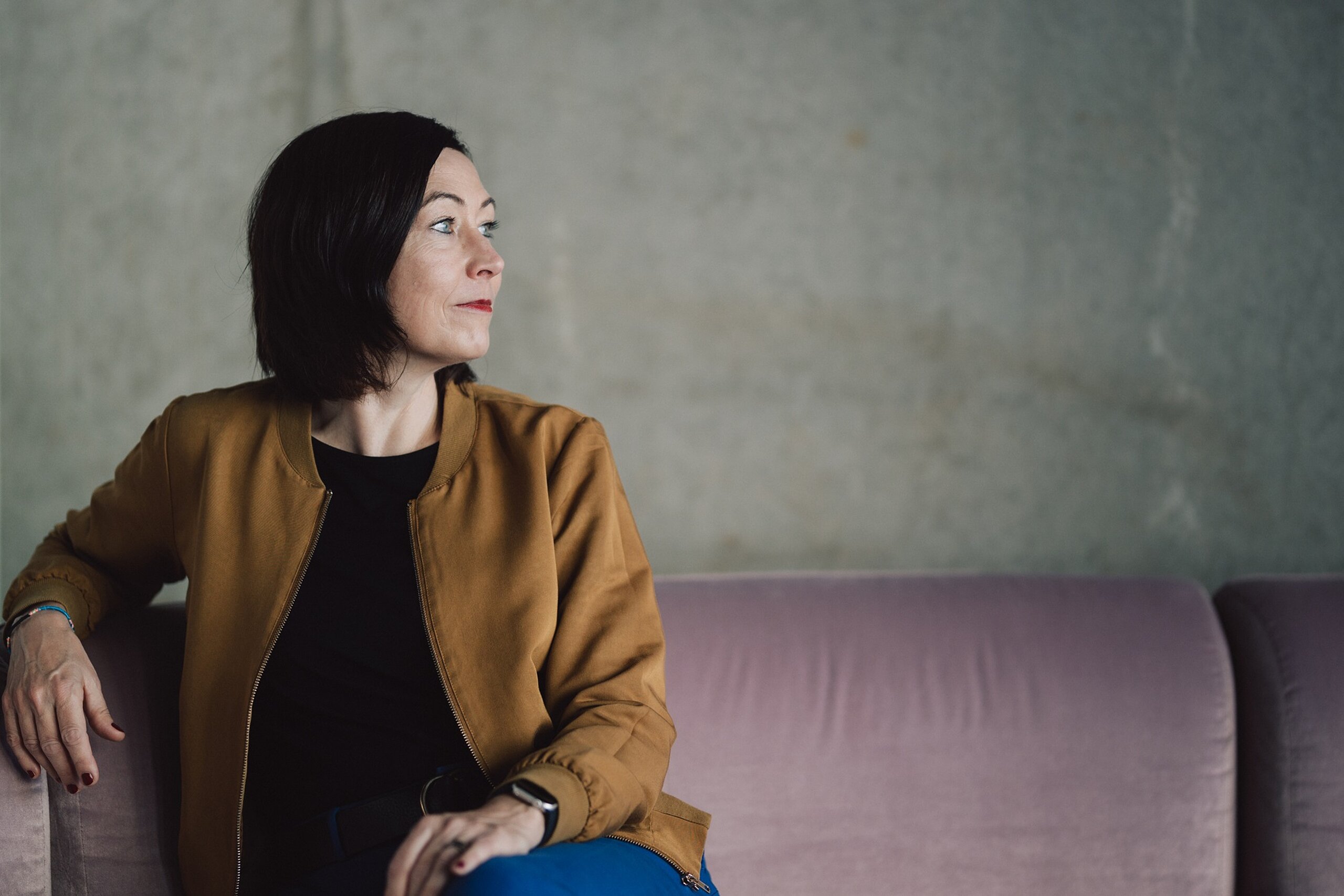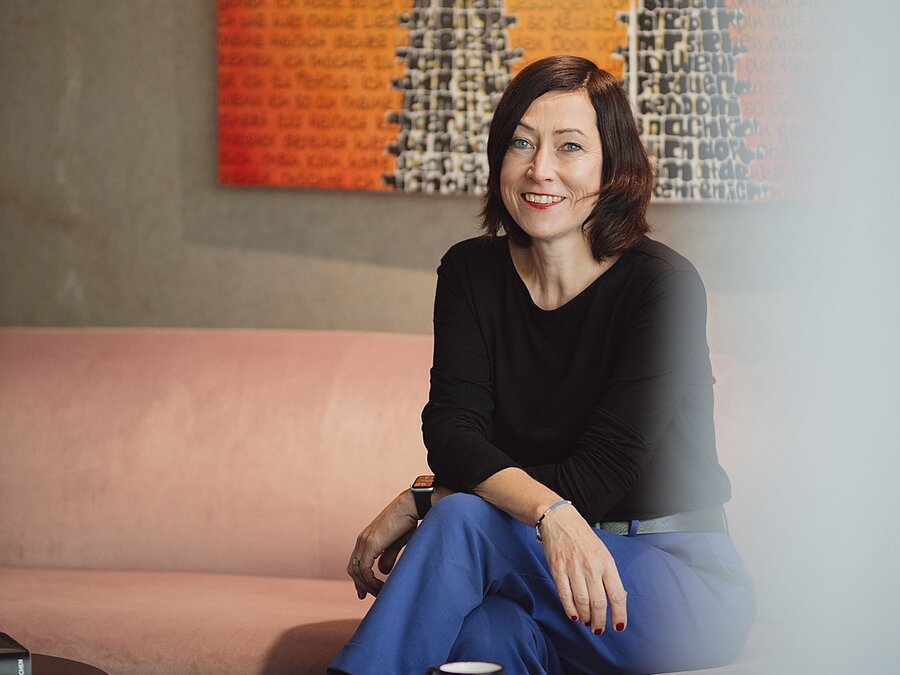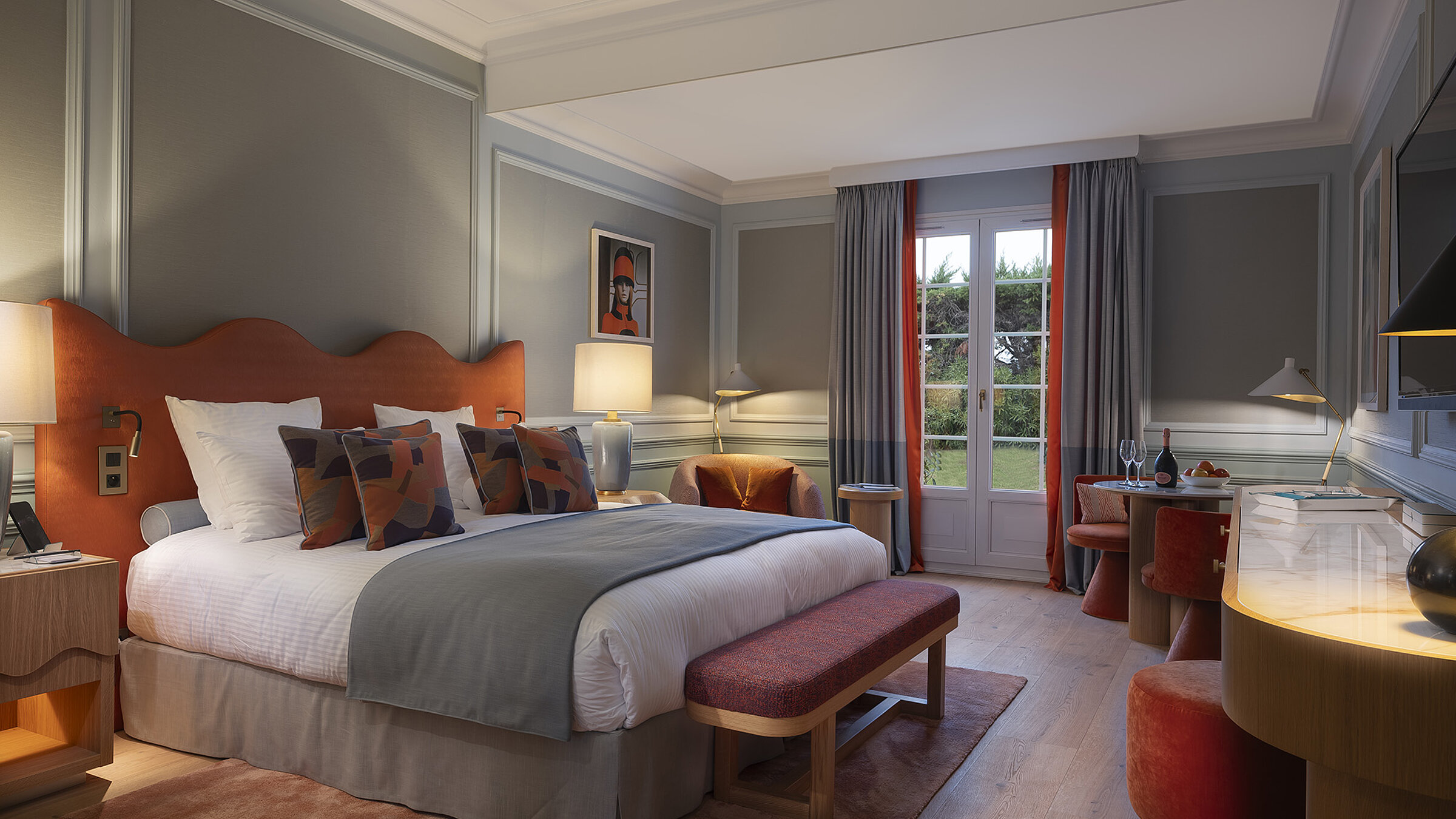
An interview with Maike Arndt, Director of Interior Design

Born and raised in Hamm, Westphalia, MAIKE ARNDT realised during her studies exactly what she wanted to do: to create the interior design for hotels. For her, there is nothing better in the world. Following several exciting projects in Berlin, Moscow and Dublin and a trip around the world, she took on the position of Director of Interior Design at Althoff Hotels in 2020.
Tell us a bit about your job as Director of Interior Design . . .
Everything related to interior design comes together in my office. I’m in charge of the portfolio buildings as well as the new construction projects. I’m the liaison between the external interior designers, the architects and planners, the contractors – in other words, everyone involved in the various projects.
Which projects are you currently focusing on the most?
My focus is currently on three projects: the Althoff Dom Hotel in Cologne, the former Villa Kennedy in Frankfurt and the remodelling of the Villa Belrose at the Gulf of Saint Tropez. We recently created a model room there together with our Head of Design Markus Hilzinger.
Can you explain what exactly a model room entails?
A model room is a very important step in the planning and design of our hotels. At Villa Belrose, we completely renovated and furnished a single room in advance. It’s like a 1:1 scale model, where every single piece of furniture is inspected, and the qualities are precisely defined. Every detail is specially verified, for example whether a chair is the right height for the table or whether we want to change this or that a little. If everything in the sample room is perfect, you can use this as a blueprint to remodel all the other rooms.
What can guests at Villa Belrose look forward to in the coming year?
At the moment, everything is still a work in progress, as we want to offer our guests a perfect hotel experience for the start of the new season in April 2024. We can only say this much: The new design blends in very harmoniously with the existing architecture. All rooms are timelessly modern and reflect the style of the hotel, which I like to describe as sophisticated Mediterranean.
What was special for you about the remodelling of Villa Belrose?
We originally had the idea of completely redoing the rooms: reconfiguring the bathroom, creating a walk-in dressing room, modifying the entire floor plan. On site, however, we realised that there was no way we were going to do that, as we really wanted to keep the gorgeous marble bathrooms. So we questioned the entire floor plan again and decided to retain the stucco profiles and the generous sense of space. We were able to preserve the character of the rooms while at the same time creating a more contemporary atmosphere.
Trends come and go. How do you deal with that in the interior design of a hotel, where you can’t make changes every year?
Basically, you always ask yourself what message it is that you wish to convey with your design. What is the sense of place, what is the storytelling, what is the story that the guests should experience on their journey? This goes beyond mere aesthetics. The trick is to find the local identity and transfer it to the interior design. You have to ask yourself what narrative elements are integrated into the design process, what special materials there are locally that could be used. This could be natural stone, certain fabrics, wood, but also works by local artists or accessories that are unmistakably from the region.
Is interior design always a dialogue with the past heritage?
Absolutely. Let’s take Villa Belrose as an example. It is an old and elegant villa. It wouldn’t be right to remodel it as an urban city hotel. You always have to think about what story you want to tell, how you can integrate it into the existing building while preserving the DNA of the property itself.
How often do you change things in your own home?
A lot! laughs Nothing is more constant than change. And I think my home will probably never be finished.

The interview from the Althoff magazine continues...
Do you still have time to create your own designs?
My work is very multifaceted, and of course I also enjoy designing things myself. We then realise the ideas as a team. It's a very creative, varied job, especially as the design and realisation of one or more hotels are always extensive projects.
How long does the design last before you have to replace it?
The rule of thumb used to be that it happens every ten years. This has changed - also in terms of sustainability. Today, nobody would remove marble to replace it with tiles, for example. Instead, people make sure that materials are durable and that the design works for many years. There is a very nice quote from Coco Chanel that summarises this well: "Fashion goes, style stays".
What are the biggest mistakes that can be made in interior design?
It always bothers me when the design takes centre stage and functionality is compromised as a result. This can be an uncomfortable armchair or a chair that doesn't match the height of the table. It's really bad when you can't find the right light switches. If you have to get up three times to switch off the last light, something is wrong.
Do you get feedback from the guests?
I get the most feedback from my colleagues. But my team and I are usually on site around an opening and experience first-hand how our work is received. We also involve our employees in the planning phase, such as housekeeping, who provide us with information about which fabrics are suitable or which corners of the room might be difficult to clean, for example. This is very valuable for us, because we want to design and create something that works for everyone.
How eye-catching can or should interior design be?
It should never be an end in itself. The guest should feel at home, but still be able to immerse themselves in another world.
Is this immersion the moment when you know that you have done everything right in your work?
When everyone is happy at the end, I know that I've done everything right. First and foremost, the guest should feel comfortable, but of course the hotel staff should too. My colleagues should have a nice place to work.
What is your favourite interior design trend at the moment?
I'm really excited about biophilic design, an aesthetic concept that aims to design spaces in such a way that they harmonise better with nature. This is also a big topic in my work at the moment: creating healthy living spaces in harmony with nature while also conserving resources and using materials carefully.
Where do you find inspiration for your work?
If I apply this specifically to a hotel, then mainly on site. There have been times when I have discarded all my designs based on my impressions of the location. But apart from that, inspiration can be found everywhere: in trade magazines, exhibitions, museums, travelling, talking to the team. It can also be a walk in the woods. My best ideas always come to me when I'm cycling.
How does someone like you design their own home?
I would describe it as eclectic. There's my grandma's cupboard and the school desk that was saved from an old monastery, but also the designer lamp and the collection of vases from the flea market.